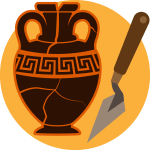burn a ceremonial fire
fire or bake the clay urns
bake pizza
Correct!
Archaeologists believe the hearth may have been used to fire the urns, which were made of ceramic, or baked clay. The base, or human figure, was made as one piece, and then the decorative details were added separately.




 Biodiversity
Biodiversity
 Brain
Brain
 Genetics
Genetics
 Marine BiOLogy
Marine BiOLogy
 MicrobiOLogy
MicrobiOLogy
 PaleontOLogy
PaleontOLogy
 ZoOLogy
ZoOLogy
 AnthropOLogy
AnthropOLogy
 ArchaeOLogy
ArchaeOLogy
 Astronomy
Astronomy
 Climate Change
Climate Change
 Earth
Earth
 Physics
Physics
 Water
Water
